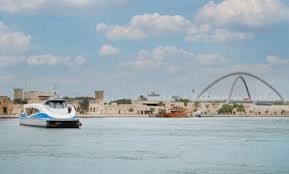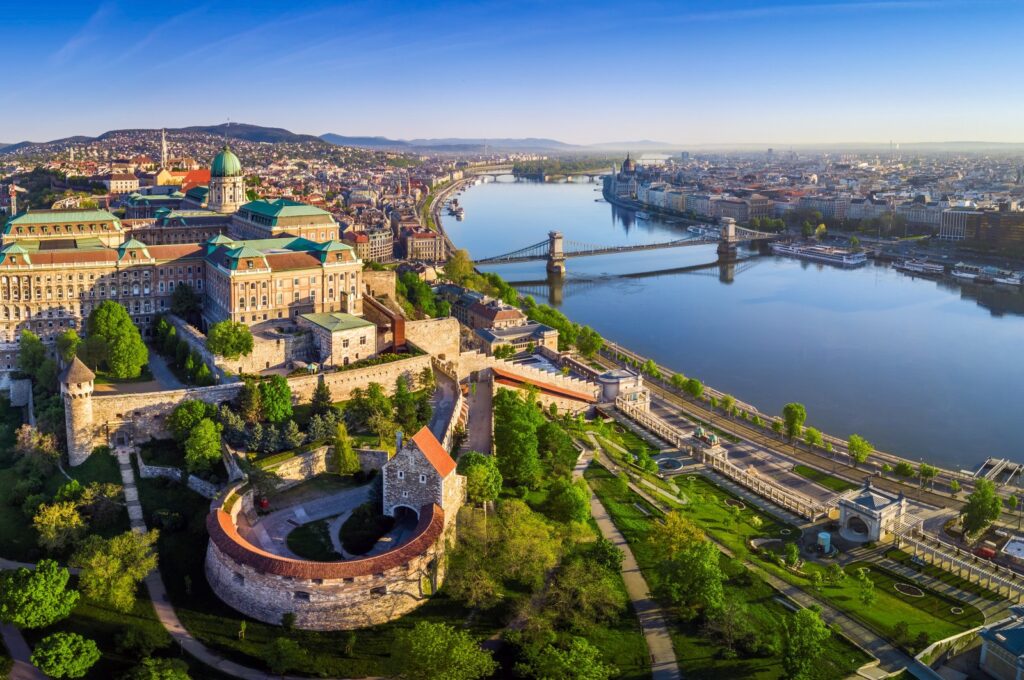
Özge Şengelen
ISTANBUL: I want to take you to a wonderful place that will satisfy you with its history and delicious food, a city bordering Greece and Bulgaria, a land that served as the capital of the Ottoman Empire for years. Let’s go to Edirne
Edirne, which served as the capital of the Ottoman Empire until the conquest of Istanbul in 1453, has a distinctly important historical texture. Edirne has a total of nine districts but also appeals to a different section of tourists with its seafront districts. However, I will say, those who love history and culture should spend more time in the center of the city. It is an ideal city for those who want to take a gastronomic city tour while the mosques, complexes, fountains and baths inherited from the Ottoman Empire await those who want to follow the traces of history.
Selimiye Mosque with its grandeur, the Sultan Bayezid II Complex, Kırkpınar Square, the shopping in Selimiye Shops, Karaağaç Train Station, Edirne Saraçlar and the Meriç Bridge are only some of the historic beauties waiting for you in Edirne.


Selimiye masterpiece
One of the first historical buildings that comes to mind when Edirne is mentioned is of course the Selimiye Mosque, which the 16th-century Ottoman architect Mimar Sinan called “my masterpiece.”
Mimar Sinan was one of the most important architects of the period during the Ottoman Empire. He defined the Şehzade Mosque which he built in Istanbul as his “apprenticeship,” the Süleymaniye Mosque, also in Istanbul, as his “foremanship” and the Selimiye Mosque in Edirne as a work of “mastery.”

Even when you look at the Selimiye Mosque from afar, it is possible to see that it was really masterfully made, but you should definitely visit the garden and the interior of the mosque.
In addition to the architectural beauty of the mosque, which has four minarets, its marble, tile, wood, stone and mother-of-pearl decorations are also very interesting.
Another very interesting detail is hidden inside the mosque. An upside-down tulip motif can be seen on one of the pillars inside the mosque, ever attracting the attention of visitors who come here.
There are also many stories about the inverted tulip figure that Mimar Sinan created inside the mosque. Here is one of them.

While Mimar Sinan was building the mosque, the spot where the tulip is located used to be a tulip garden back then. The woman who was the owner of the tulip garden did not want to hand over the land even though she was offered bags of gold coins. She finally agreed to give the land on the condition that something be put in the mosque so that people would remember her. Thereupon, Mimar Sinan wanted a tulip motif to be placed on one of the pillars. However, he had the tulip motif reversed as a reference to her stubbornness.
According to another story, Mimar Sinan wanted 99 types of tulip motifs on the tiles, in tribute to the 99 names of Allah, but accidentally they embroidered 98 motifs. So, Mimar Sinan wanted the 99th tulip to be embroidered upside down, as a sign of mankind’s helplessness. Sinan said that this would draw attention to the helplessness of us servants with this mistake, and also that the inverted tulip would be an amulet for the Selimiye Mosque. He wanted people to come here for the inverted tulip, and to protect the mosque from the evil eye of those who come, by overshadowing even the magnificent mosque. Thus, he said, “at the same time, it would reveal what a helpless servant I am.”
Finally, it is said that Mimar Sinan had the reverse tulip incorporated for his beloved granddaughter Fatma, who died during the construction of the mosque.
Another historical structure that draws attention as much as Selimiye Mosque in Edirne is the Bayezid II Mosque and Complex.

Bayezid II Complex
The Bayezid II Complex which was built by Sultan Bayezid II in 1488, is spread over a wide area with a mosque, medical school, soup kitchen, hospital, Turkish bath, kitchen, food warehouses and other sections.
At the time, medical students were trained in the medical school of this complex and the patients were cared for in the hospital. In the museum, which currently serves as a look back at the methods used at the time, the environment in the medical school and the hospital is described using mannequins and reflects the period in a very realistic way. What kind of treatments were applied to which diseases at that time is also explained with mannequins.
After you enter the museum garden and move a little further, you hear the sound of water and music. The most striking aspect of this museum is this beautiful sound. Because at that time, besides medicine; water, music and fragrances were used to treat different kinds of diseases. Three days a week, music was played and songs were sung with different maqams – melodic modes that define pitches, patterns and development of a music piece – according to each disease.

When you enter the hospital, the soothing sound of the water flowing in the middle in a pool and peaceful music welcomes you. On the stage, you can see the instrumental ensemble consisting of 10 people as a representation. By entering different rooms, you can read informative articles about which patients were treated with which maqam of music and scent. For example, the Rehavi maqam is played for headaches and the Iraqi maqam is played to treat anger. They also used sound, scent and music to help treat mental illnesses.
Indeed, when you enter the hospital, the sound of music with the calming effect of the water makes you the softest, calmest and most peaceful person in the world. It is impossible for me to describe the feeling I had there. You must go and see it, experience it and feel it.
In the medical school section of the complex, you can see the instruments used in medicine at that time. In the same way, you can learn about the medical education of that period, which is told through mannequins in different rooms. The entire museum is quite impressive. Frankly, every time I go to Edirne, I visit this museum. Every time I enter, I get enchanted and leave calmed. Also, every time I visit, I gain more knowledge and discover something new.


You can see many historical buildings from the Ottoman period in Edirne. Its palace was destroyed in the wars, but its ruins still remain.
After visiting all these historical places, I recommend you to go on a small gastronomy tour of the city.
Delicious traditional cuisine
Although Edirne has many different flavors of its own, the most popular cuisine is Edirne liver. Do not even think of returning from here without eating Edirne liver. Be sure to taste the meatballs as well as the liver. You can choose Edirne’s famous marzipan as an after-dinner dessert.

After eating delicious liver and meatballs, you can relieve the tiredness of the day by drinking Turkish coffee in a cafe by the Meriç Bridge.
Located on the Meriç River on the Karaağaç road, this bridge is one of the most beautiful examples of bridges from the Ottoman period. It is also one of the symbols of Edirne. It is a wonderful place where you can take in the bridge in front of you and soak up the sun with your foamy Turkish coffee during sunset.
If you are visiting Edirne in July, you will be lucky. Because every year in July, the Kırkpınar Oil Wrestling Festival is held in Edirne. Wrestling, which has been a traditional sport since the Ottoman period, is held in a festive atmosphere. If you go to Edirne in July, you can watch this traditional sport and participate in the festivities.
At the same time, Edirne’s coastal districts await you with their natural beauties and sea for those who come in July. Enez Beach, Yayla Beach, Erikli Beach and Ibrice Beach have coves known for their self-cleaning feature due to countercurrents. You can enjoy the sea to the fullest on these beaches.
In short, Edirne is a great cultural tour alternative where you can trace history, visit many Ottoman buildings and satisfy your stomach with different tastes.
Courtesy: Dailysabah
The post An Ottoman capital: From history to nature, wonders of Edirne appeared first on The Frontier Post.








